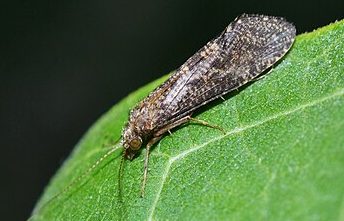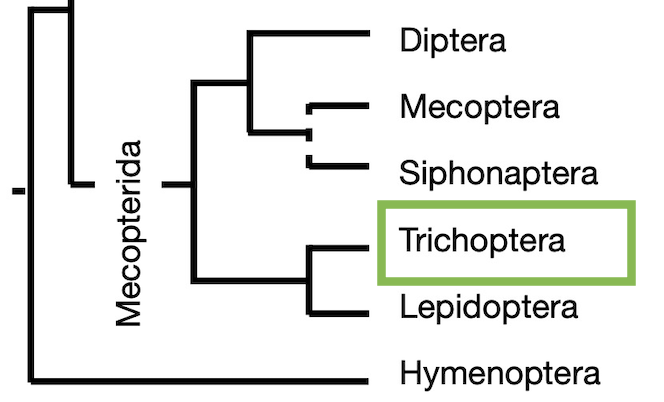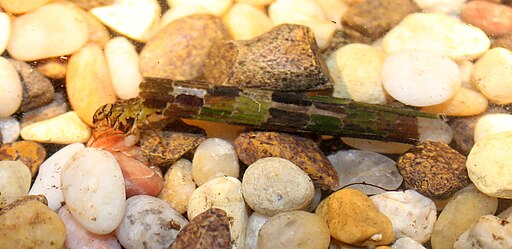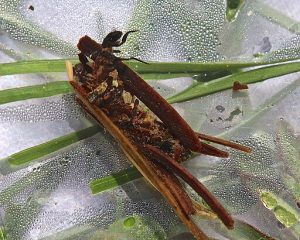39 Orders of Insects: Trichoptera


Order Trichoptera: Caddisflies
Trichoptera
- common name: caddisflies
- from Greek: tricos = hair, ptera = wings; relates to their wing covered in tiny setae (hairs)
- distributed worldwide; over 13,000 described species; over 800 Australian species
- one of largest orders of aquatic insects
- adults are weak fliers; typically crepuscular or nocturnal
- adults short-lived; may not feed
- Copulation typically occurs in flight or on vegetation
- larvae are aquatic; free-living, or construct portable or fixed shelters; when the larva pupates, the case is attached to a rock or other fixed object in water
- larvae may be herbivores, scavengers or predators
- larvae able to spin silk, which probably originated in the common ancestor of the sister-groups Trichoptera and Lepidoptera.
- the form and function of cases, nets and shelters is generally constant at the generic level.


Characteristics of Trichoptera
Adults
- Small to large (2-40mm), elongate
- long, tapering, filiform antennae, reduced mouth-parts (no proboscis) but well-developed maxillary and labial palps; compound eyes present
- wings covered in tiny, dense hairs (setae), held tent-like over the body
Immatures
- Immature stages (larvae) aquatic, often case-bearing, but many free-living
- mandibulate mouthparts
- three pairs of segmented thoracic legs and no abdominal prolegs
- thread-like abdominal gills; abdominal hooks on the tip of the abdomen; keeps case connected to body as larva moves
- herbivores & scavengers have cases; predators tend to be free-living and use silk to catch prey
Caddisflies are valuable bioindicators of water quality. They are sensitive to pollution and changes in water flow, making them useful for assessing water quality in streams, lakes, and other water bodies. Read more…
Keen to know more?
- Have you heard of caddisfly art?
- More information about Trichoptera:
Topic Review
Do you know…?
- The main anatomical features of Caddisflies?
- The habitats of caddisflies

